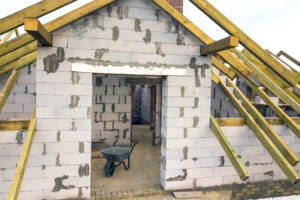Stamp duty is one of the most significant one-time payments you will make when purchasing a home, usually coming in second only to the deposit itself.
Stamp duty, also known as land transfer duty, is a tax imposed by state and territory governments whenever a buyer purchases a property, whether they are a first-home buyer or an investor – and it can even be enforced when a property is handed over without the new owner has paid a cent towards it, such as when it is a gift.
The buyer must pay the stamp duty fee directly to the revenue office of the state or territory, but the process is best handled with the assistance of a solicitor or conveyancer.
What Is Stamp Duty?
Stamp duty is essentially a tax that pays for the transfer of property (such as homes or lands) from one lender to another. They also apply to other types of property such as mortgages and vehicles – as well as any other belonging that has your name on the contract.
When it comes to real estate, the value of the property is the primary determining factor in how much you will have to pay. Furthermore, the state in which you make the purchase will play a role, which is why it is recommended that you use a stamp duty calculator.
However, as a general rule, the higher the price of the property, the more stamp duty you will have to pay. Electronic commerce is defined as the sale of electronic goods.
How does stamp duty work?
Stamp duty, also known as transfer duty in Australia, is a one-time fee levied by state and territory governments on the property, such as your dream home or a vacation home, vacant land, or farming property.
Stamp duty is not tax deductible, but it can be deducted as a cost of purchasing a home from any future capital gains tax if you sell your home for a profit.
You cannot add stamp duty to your mortgage as a separate fee payable to the government up front, but your lender may be willing to tack it on if you are struggling to arrange all of the funds needed to complete the property purchase.
Stamp duty is generally paid within 30 days of signing the contract or 30 days of settlement, depending on the jurisdiction.
How Does Stamp Duty Vary from place to place?
As you may have noticed, stamp duty varies depending on where you made your purchase. Three specific factors will determine how much stamp duty will cost.
Location: The stamp duty price is usually set as a percentage of the total price of the property, but this also depends on where the property was built.
Property Type: Each property type has a different stamp duty value. For example, the cost of an existing residential loan differs from the cost of vacant land.
Purpose: Is it your intention to rent out the property right away or to live in it? Stamp duty may also differ in this case.
Grants: Depending on the state, grants are available to first-time homebuyers, with no stamp duty payable up to a certain amount, with subsequent discounts.
How much to pay for stamp duty in Australia?
When it comes to purchasing a home, there will always be additional costs – and most of the time, these costs will exceed the deposit. You will have to deal with lender’s fees, legal fees, and building inspection fees, but the stamp duty fee will most likely burn a large hole in your budget.
To make matters even more complicated, there is no standard rate of the stamp duty in Australia. In fact, each state will have its own rate, which may leave you perplexed as to what it is and how much you will have to pay. To make things easier for you, this article will present you with the basics of stamp duty.
How is stamp duty calculated?
Stamp duty rates and rules vary by state and territory in Australia. In general, a stamp duty obligation is determined by the purchase price of a property, its type (existing home, new home, or vacant land), and its purpose (primary residence or investment property). In New South Wales, Victoria, and Queensland, foreign buyers (non-residents) are also subject to an additional stamp duty levy.
The higher purchase price or valuation will be used as the property value in the calculation. These can vary depending on the circumstances. For instance, in a favourable purchase, you buy property from a friend or relative for less than what it is worth. Typically, no real estate agent is involved.
The value of the land and buildings as of the date of the contract of sale is frequently used to determine stamp duty for off-the-plan purchases. Contracts are signed and the deposit is paid on this date. As a result, if construction has not yet begun, stamp duty may be much lower than if you were to buy residential property or existing property. When you sign the contract, the construction will likely be almost finished, so there will be very little chance of a discount.
New South Wales: Stamp duty is the same whether the property is your primary residence or investment property.
Victoria: Of all the states, Victoria has the highest stamp duty rate for investment properties. Even though the stamp duty on owner-occupied homes is lower, it is still the second highest in the country.
Queensland: Out of all the states, Queensland has the lowest stamp duty rates for owner-occupied homes. Investors can pay more than double this amount for the same property, but it is still one of the most affordable.
ACT: Like NSW, ACT charges the same amount whether the property is used as a primary residence or an investment. Out of all the states, it has the lowest overall stamp duty cost for investment properties.
South Australia: South Australia is among the three states with the highest stamp duty rates. Whether it is an owner-occupied home, the rules are the same.
Western Australia: If you intend to live in a property you buy for less than $200,000, stamp duty is charged at a reduced rate. Regardless of whether the property is used for personal use or as an investment, the same amount of stamp duty is due, and this state has the middle-of-the-road cost among all the others.
When should stamp duty be paid?
In Australia, you must pay the stamp duty within 30 days of the settlement of your property purchase. The amount of stamp duty you will pay is determined by the value of the property. Of course, each state has its own rates, which can make things more complicated. The information below explains when to pay stamp duty based on your state.
Australian Capital Territory
Payable within 28 days of settlement completion. When the buyer receives a notice of assessment from the Canberra offices, an agreement is considered to have been made.
New South Wales
Stamp duty can be paid within three months of the settlement being completed.
Northern Territory
You can pay 60 days after settlement or transaction initiation, whichever comes first.
Queensland
Queensland paid within 30 days of the completion of the settlement.
South Australia
You can pay on the completion of the settlement.
Tasmania
Paid 3 months after the transfer is complete.
Victoria
Can be paid three months after the settlement is finalised.
Western Australia
You can pay within two months after the settlement is complete.
Failing to pay within the stipulated time shall attract additional penalty rates and interest.
What assistance is available to first home buyers?
A first-time home buyer is someone who, along with their partner, has never owned a residential property in Australia.
In Australia’s three most populated states – New South Wales, Victoria and Queensland – the stamp duty rate is 0% for eligible first-home buyers who meets specific criteria. Tasmania, South Australia, and the Northern Territory are three states and territories that don’t offer stamp duty relief but attempt to make up for it with a higher First Homeowner Grant (FHOG).
The First Homeowner Grant (FHOG), a federal government initiative designed to mitigate the impact of the Goods and Services Tax (GST), can be used to offset the cost of stamp duty indirectly. Although the FHOG is a federal initiative, it is managed and funded by state and territory governments.
Issues with Stamp Duty
An out-dated tax
The original stamp duty tax stems from an ancient government system. Land transfers were less common, and the property was not as meticulously recorded as it is today.
Furthermore, the actual process of officiating a sale and stamping (yes, with a real stamp) the documents required more government time. Stamp duty was thus an imperfect method of ensuring that the government received taxes from property owners, but things have changed dramatically since then.
Governments not only have a much easier time of it, but they also have accurate and up-to-date records of every piece of land in their state or territory. The way we buy and sell property has changed, so shouldn’t the taxes that come with it change as well?
The price of stamp duty
Buying property is easily one of the most significant purchases made by the average Australian. Many of us pursue this exciting dream. However, there is a significant financial barrier to overcome. Property prices have risen dramatically in recent decades and are now significantly higher than the average income.
As a result, stamp duty is not only a high tax, but it also comes at a time when the gap between the average wage and the average price of the property is wider than ever.
Changes in behaviour
Perhaps most importantly, the cost of stamp duty influences behaviour. The additional cost is a significant impediment to anyone attempting to enter the real estate market. Not only that, but it’s a huge turnoff for anyone looking to relocate to a new home. A growing family may decide to stay in their current home and try to renovate or expand it in order to avoid paying stamp duty again.
Similarly, retirees frequently stay in houses that aren’t ideal for their needs simply because downsizing would cost them a lot of money in taxes.
Who is exempt from paying stamp duty?
The good news is that many people can avoid paying stamp duty entirely. Here’s how: if you’re a first-time home buyer and your property isn’t too expensive, you can certainly avoid or spend less. If you fall into this category, you are likely to be unable to pay it, which is why this exemption exists.
If you are divorcing and require one-half of the split to take over the property, this is also grounds for an exemption. Older people who have retired, as well as those who care for them, are sometimes exempt from paying stamp duty.
Is it possible to avoid paying stamp duty?
As previously stated, certain individuals (first-time home buyers, divorcees, and senior citizens) are exempt from paying stamp duty in certain states.
Lower-income buyers in the ACT can avoid it, while in NSW, WA, and Victoria, if your property is worth less than $800,000, you may be exempted or eligible for a reduction. However, media house prices in Sydney and Melbourne are significantly higher than the thresholds, so this plan is unlikely to work for you.
Reductions, but not full exemptions, are available in the Northern Territory, Queensland, Tasmania and most of the Australian states. You’re out of luck in South Australia: there are no exceptions.
Is stamp duty payable on property that has been gifted or transferred?
So, what if someone gives me the land? Unfortunately, you must still pay. The exact costs that cause stamp duty to be paid in the first place – i.e., transaction costs to the government – occur whether you buy it or give it away, so the stamp duty story remains the same.
Again, the best option is to look for the same exemptions as if you were purchasing the property normally and hope that you fall into one of those categories.
If you are given the property by a parent for inheritance purposes, it may not help you, but if you receive it as part of a divorce settlement, it may.







